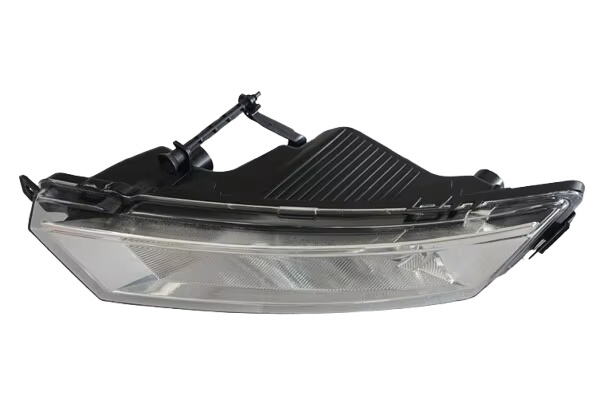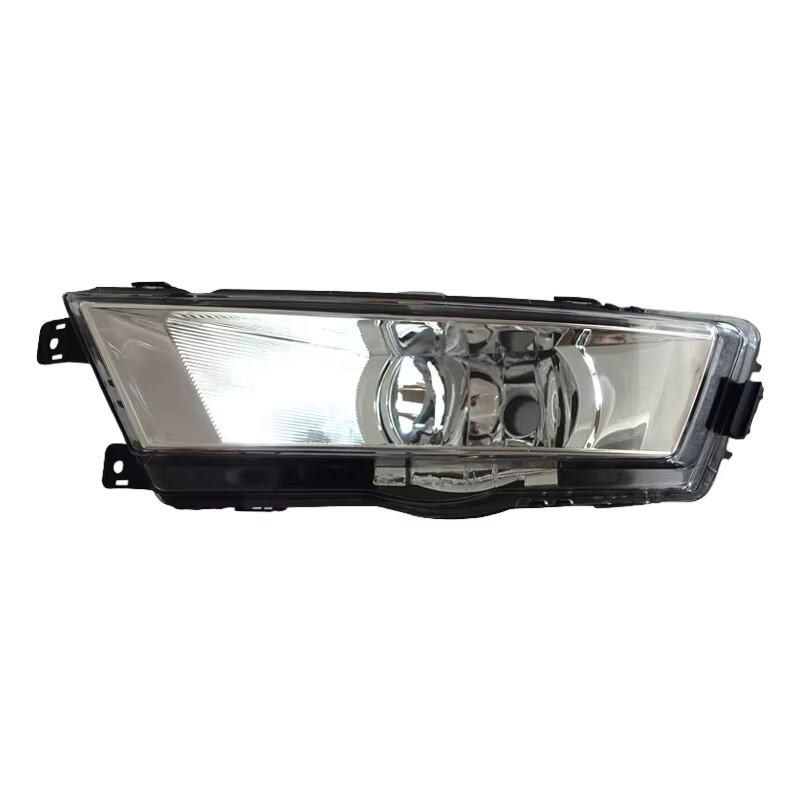Avtomobilin Görünənliyinin Düzgün İşıqlandırma ilə Artırılması
Təhlükəsiz sürmək üçün düzgün işıqlandırma olması çox vacibdir. Sis işıqları qəhvəyi işıqlar avtomobilin işıqlandırma sisteminin vacib komponenti kimi çıxış edir və qəhvə, yağış və qar kimi çətin hava şəraitində əlavə görünənliyi təmin edir. Özü quraşdırmaq istəyən yeni başlayanlar üçün prosesin və tələblərin başa düşülməsi, quraşdırmanın hamar və uğurlu keçməsini təmin edəcək. Bu təsərufçü təlimatda biz sis işıqları -ın məqsədini, hazırlıq addımlarını, quraşdırma prosedurlarını və təmir tövsiyələrini araşdıracağıq.
Qəhvəyi işıqların başa düşülməsi və onların əhəmiyyəti
Nə üçün Qəhvəyi işıqlar Fərqlənir
Uçan işıqlar, yolun üstünə yönəldilmiş geniş, çubuq şəkilli işıq şüasının yaranmasını təmin edəcək şəkildə hazırlanmışdır. Bu, işığın qar, yağış və ya şaxtalı havalarda əks olunmasından yaranan parıltını azaldır. Standart işıqlardan fərqli olaraq, təmas işıqları avtomobilin daha aşağı hissəsində yerləşdirilir ki, bu da aşağı həddə enmiş şəraitdə yolun daha effektiv işıqlandırılmasına imkan verir.
Təmas işıqlarının istifadə üstünlükləri
Strateji yerləşdirilməsi və işıq şüası naxışından irəli gələn təmas işıqları, narahat edici hava şəraitində sürücünün görmə qabiliyyətini yaxşılaşdırmaq və sürücülük təhlükəsizliyini artırmaq üçün xüsusilə faydalıdır. Bu işıqlar sürücülərin yol nişanlarını, kənarları və yolun kənarında olan maneələri daha asan aşkarlamasına kömək edir və hər bir avtomobil sahibi üçün qiymətli bir əlavədir.
Quraşdırmaya Hazırlıq
Lazım olan alətlər və materiallar
Quraşdırma prosesinə başlamazdan əvvəl bütün zəruri alətlər və materiallar toplanmalıdır. Bunlara dumanlı işıq dəsti (nəqliyyat vasitənizin modelinə uyğun olaraq), kabel çalı, relyelər, açarlar, elektrik dələn maşını, tornavida, qabarma dəsti, izolyasiya lent və plastik bağlamalar daxildir. Bütün avadanlıqların avtomobillə uyğun olduğundan əmin olmaq prosesi asanlaşdıracaq.
Təhlükəsizlik nəzərdən keçirilməsi və avtomobilin qiymətləndirilməsi
Elektrik zərbəsindən qorunmaq üçün əvvəlcə avtomobilin batareyasını ayırın. Həmçinin avtomobilinizin ön bamperini və alt konstruksiyasını yoxlayaraq uyğun quraşdırma nöqtələrini müəyyənləşdirin. Əgər avtomobilinizdə əvvəlcədən hazırlanmış duman işıqları üçün açılışlar varsa və ya əlavə dəyişikliklər edilməlidirsə, onu yoxlayın.
Addım addım Quraşdırma Prosesi
Duman işıqlarının quraşdırılması
Bamper üzərində göstərilən yerlərə duman işıqlarını möhkəm şəkildə təmin edin. Əgər avtomobilinizdə əvvəlcədən quraşdırılmış duman işıqları üçün açılış yoxdursa, bamperdə kəsik etmək lazım ola bilər. Düzgün ölçülər götürün ki, misalign (səpələnmə) baş verməsin. Yerləşdirmədən sonra bütün quraşdırma bəndlərini uyğun alətlərlə möhkəm sıxın.
Yanğınlıq lampalarının qurulması
Hər bir yanğınlıq lampasından relye, düymə və nəhayət maşının enerji mənbəyinə qədər keçid yaradan kabel yığınını buraxın. Yanğınlıq lampaları üçün təmin edilən sxemə əməl edin. Elektrik lentindən və zip bağlayıcılardan istifadə edərək, kabeli hərəkət edən hissələrdən və isti səthlərdən uzaqda möhkəmləyin.

Sınaq və Dəyişikliklər
İş funksionallığının təmin edilməsi
Kabel yığınının qurulmasından sonra avtomobilin batareyasını yenidən qoşun və quraşdırılmış düyməni basaraq yanğınlıq lampalarını sınayın. Hər iki lampada işıq intensivliyini və yönəltmə bucağını yoxlayın. Əgər işıqlar yanmır və ya zəif işıq verir, bütün elektrik qoşulmalarını və sigortalı qutunu yoxlayın.
Yanğınlıq lampalarının yönəltməsi və işıq şüasının tənzimlənməsi
Səhv yönəldilmiş yanğınlıq lampaları effektivliyi azalda və qarşıdan gələn sürücüləri kor edə bilər. Yanğınlıq lampalarını avtomobildən bir neçə fut irəlidə və aşağı istiqamətdə işıq verməsi üçün tənzimləyin. Tənzimləmə üçün səviyyəli səth və divar istifadə edə bilərsiniz.
Qarşısını almaq üçün ümumi səhvlər
Yüksək intensivlikli işıqlarla işıqlandırma
Çox parlaq olan soyuq işıqların quraşdırılması əks təsir göstərə bilər və yol hərəkəti qaydalarını pozmaqla nəticələnə bilər. Həmişə yol istifadəsi üçün uyğun olan təsdiq edilmiş parlaqlıq səviyyəsinə malik işıqları seçin. Artıq parlaqlıq soyuqda pərakəndə yayıla bilər və görmə qabiliyyətini pozar.
Yanlış Elektrik Qablaşdırılması
Soyuq işıqları rele olmadan batareyaya qoşmaqdan çəkinin. Bu, sobələnməyə və ya elektrik yanğınlarına səbəb ola bilər. Soyutma işıqlarını və həmçinin avtomobilin elektrik sistemini qorumaq üçün həmişə elektrik dövrəsinə rele və sikliklər daxil edilməlidir.
Uzunömürlülüy üçün Soyutma İşıqlarının Baxımı
Təmizləmə və Xidmət
Soyuq işıqlar vəziyyətlərinə görə toz, çirk və nəmə məruz qalır. İşıq şəffaflığını saxlamaq üçün obyektivləri müntəzəm olaraq yumşaq sabun və su ilə təmizləyin. Səthi xətləyə biləcək və təsirin azalmasına səbəb olan aşındırıcı təmizlik vasitələrindən istifadədən çəkinin.
Müntəzəm Yoxlamalar və Əvəzetmələr
Yanğın lampalarını müntəzəm olaraq çatlamalar, su keçirmə və ya işıqların titrəməsi üçün yoxlayın. Lampa işıqları zəifləməyə başladığı anda yenilərini qoyun. Elektrik kabelinin zədələnməmiş və paslanmadan təmiz olduğunu təmin edin. Vaxtında texniki xidmət yanğın lampalarınızın ömrünü uzadacaq və onların daimi işini təmin edəcək.
Fərdiləşdirmə və Yeniləmələr
LED Yanğın Lampalarının Seçilməsi
Tərtibatçılar tərəfindən LED yanğın lampalarına keçid etməyi üstün tuturlar, çünki onlar daha səmərəli, davamlı və parlaqdırlar. LED lampalar daha az enerji istehlak edərkən daha yaxşı işıq verir. Seçdiyiniz LED yanğın lampalarının avtomobilinizin elektrik sistemi ilə uyğun olduğunu yoxlayın.
Yanğın Lampaları Üzərində Styling və Rənglərlə İş
Bəzi sürücülər yanğın lampalarını üzlüklər və ya müxtəlif rəngli linzalarla fərdiləşdirməyi sevirlər. Bu, görünüşü gözəlləşdirə bilər, lakin görünüşün azalmasına səbəb olmayan və ya yerli avtomobil işıqlandırma qaydalarına zidd olmayan seçimləri seçmək vacibdir.
Yanğın Lampalarının Digər İşıqlandırma Sistemləri ilə İnteqrasiyası
Əsas Farlarla Eyniləşdirilməsi
Bəzi sürücülər dumanlıq faralarının avtomatik olaraq işıqlandırma ilə aktivləşdirilməsini tərcih edirlər. Bu, düzgün naqil konfiqurasiyaları ilə həyata keçirilə bilər. Bununla belə, yol hərəkəti qaydalarına uyğun olaraq dumanlıq faralarının yalnız uyğun şərtlərdə işlədiyindən əmin olun.
Dumanlıq faralarını gündüz işıqlandırma kimi istifadə etmək
Dəyişikliklərlə dumanlıq faraları gündüz işıqlandırma funksiyasını (DRL) da yerinə yetirə bilər. Bu, uyğun dövrələr tələb edir və gündüz sürücülük zamanı əlavə görünəbilirlik təmin edə bilər. Belə tənzimləmələr edərkən qanuni uyğunluğa diqqət yetirin.
Müxtəlif sürüş şərtləri üçün faydalar
Şəhər və kənd rayonlarında təhlükəsizliyin artırılması
Dumanlıq faraları yalnız dumanlı hava şərtlərində faydalı deyil. Pis işıqlandırılmış kənd yollarında və ya güclü yağış zamanı dumanlıq faraları əlavə işıqlandırma təmin edir, burada əsas faraların işığı kifayət qədər olmaya bilər. Bu isə reaksiya vaxtını və ümumi təhlükəsizliyi artırır.
Gecə və off-road sürüşünə dəstək
Gecə və ya off-road şəraitdə gedən sürücülər üçün tuman işıqları digər işıqlandırma sistemlərini tamamlayan, yönəltmiş işıqlandırma təmin edir. Bu, xüsusilə yol kənarlarını, çalaları və bərabərsiz əraziləri müəyyən etmək üçün faydalıdır.
TEZ TEZ VERİLƏN SORĞULAR
Maşınımda tuman işıqlarının quraşdırılmasına icazə verilib ya yox, necə anlaya bilərəm?
Avtomobilinizin rəsmi istifadəçi rukovodstvosuna baxın və ya istehsalçı ilə məsləhətləşin. Bir çox avtomobillərdə tuman işıqlarının quraşdırılması üçün xüsusi təchizat və ya dəstlər mövcuddur.
Tuman işıqları bütün ərazilərdə qanuni sayılırmı?
Ümumiyyətlə, tuman işıqları qanunidir, lakin parlaqlığı və istifadə şəraiti regiondan regiona dəyişə bilər. Həmişə yerli yol və təhlükəsizlik qaydalarına əməl edin.
Tuman işıqlarını peşəkar kömək olmadan özüm quraşdıra bilərəmmi?
Bəli, lazımi alətlər və təlimatlara malik olsanız, çoxlu avtomobil sahibləri tuman işıqlarını özü quraşdıra bilər. Bununla belə, əmin deyilsinizsə, peşəkar kömək almaq daha yaxşıdır.
Tuman işıqları adətən nə qədər davam edir?
Halogen tuman işıqları adətən 500-dən 1000 saatadək işləyir, LED tuman işıqları isə istifadə və keyfiyyətindən asılı olaraq 30.000 saatadək davam edə bilər.
Mündəricat
- Avtomobilin Görünənliyinin Düzgün İşıqlandırma ilə Artırılması
- Qəhvəyi işıqların başa düşülməsi və onların əhəmiyyəti
- Quraşdırmaya Hazırlıq
- Addım addım Quraşdırma Prosesi
- Sınaq və Dəyişikliklər
- Qarşısını almaq üçün ümumi səhvlər
- Uzunömürlülüy üçün Soyutma İşıqlarının Baxımı
- Fərdiləşdirmə və Yeniləmələr
- Yanğın Lampalarının Digər İşıqlandırma Sistemləri ilə İnteqrasiyası
- Müxtəlif sürüş şərtləri üçün faydalar
- TEZ TEZ VERİLƏN SORĞULAR


